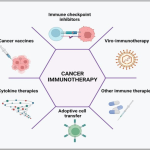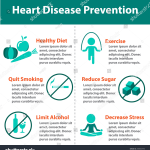Exercise and colon cancer survival are critical topics that intertwine physical health and disease recovery. Recent studies highlight the notable benefits of physical activity for cancer survivors, suggesting that regular exercise significantly contributes to improved survival rates for individuals battling colon cancer. Engaging in physical activity not only bolsters quality of life but also narrows the survival gap between cancer patients and their peers without cancer. For colon cancer survivors, this essential exercise can be a key determinant of long-term health outcomes, with notable effects on overall health and vitality. Moreover, the impact of exercise on cancer recovery underscores the importance of incorporating physical activity into standard post-treatment care.
When considering the relationship between physical fitness and cancer recovery, particularly in the context of colorectal cancer, it’s essential to explore the overarching benefits of staying active. Research indicates that consistent physical activity plays a pivotal role in enhancing the longevity and well-being of individuals recovering from cancer. This dialogue about the connection between exercise and survival rates emphasizes how adopting a physically active lifestyle can bolster health in cancer survivors. Furthermore, improving one’s fitness levels may significantly mitigate the risks of recurrence and promote a more robust recovery journey. As we delve deeper into this vital connection, it becomes clear that prioritizing physical activity can dramatically influence the health outcomes of those affected by colon cancer.
The Role of Exercise in Enhancing Colon Cancer Survival Rates
Recent studies have revealed compelling evidence regarding the role of exercise in improving survival rates for colon cancer patients. Specifically, regular physical activity post-treatment can significantly reduce the observation gap in mortality between colon cancer survivors and individuals in the general public who are of similar age and sex. This is particularly important because colon cancer remains a leading cause of cancer-related deaths globally. By engaging in consistent exercise, patients not only improve their physical health but also potentially enhance their overall longevity after a colon cancer diagnosis.
Moreover, research has shown that colon cancer survivors who report higher levels of physical activity exhibit survival rates that align more closely with the general population. For instance, a study highlighted that patients engaging in 18 or more metabolic-equivalent hours of activity per week experienced fewer premature deaths compared to their peers with minimal activity. This suggests that exercise is a crucial factor that can tip the scales towards longer, healthier lives for those recovering from colon cancer.
Understanding the Benefits of Physical Activity for Cancer Survivors
Physical activity serves as a powerful tool for cancer survivors, bolstering their recovery and overall well-being. Engaging in even minimal exercise can lead to substantial health improvements, including enhanced cardiovascular fitness, reduced fatigue, and improved mental wellness. By integrating physical activity into their daily routines, survivors not only aid their bodies in healing but also cultivate a lifelong habit that promotes health, resilience, and adequate weight management, which is essential in lowering risks of recurrence.
In addition, research underscores the correlation between higher levels of physical activity and increased quality of life in cancer survivors. Those who remain active during and after treatment report lower levels of depression and anxiety, contributing to a more positive outlook on life. Furthermore, the benefits extend beyond individual health, as increased physical activity can strengthen social bonds through participating in community exercises or group activities, fostering a supportive environment that encourages continued engagement in healthy behaviors.
How Exercise Mitigates Disparities in Cancer Treatment Outcomes
One of the most significant findings in recent research is the potential for exercise to mitigate survival disparities among colon cancer patients. The study indicated that those who maintained higher levels of physical activity witnessed a pronounced reduction in mortality risk, even when facing tumor recurrences. For patients who spent three years post-treatment engaging in moderate to high physical activities, their survival rates compared more favorably to those of similarly matched individuals in the general population.
This highlights the importance of incorporating exercise into the treatment plans of colon cancer patients, as it does not merely serve as a supplementary measure but rather as a pivotal element that can profoundly influence overall health outcomes. Regular physical activity empowers patients, helps them regain control over their bodies, and strengthens their resilience against the adverse effects of cancer treatment.
Exploring the Mechanism of Exercise on Cancer Recovery
The mechanisms through which exercise enhances recovery from colon cancer are multifaceted. Physical activity can help in regulating immune function, reducing inflammation, and improving metabolic health, all of which are crucial for cancer recovery. By promoting blood flow and delivering essential nutrients to tissues, exercise aids in tissue repair and reduces the risk of recurrence, indirectly boosting survival rates. This is especially pertinent for colon cancer survivors, where maintaining a robust immune system is vital.
Additionally, exercise has been shown to counteract weight gain and obesity, which are significant risk factors for many types of cancer, including colon cancer. By maintaining a healthy weight through physical activity, survivors significantly enhance their chances of positive treatment outcomes and a healthier lifestyle. This connection between exercise, weight management, and cancer recovery underscores the critical nature of physical activity for colon cancer survivors.
Psychological Benefits of Exercise for Colon Cancer Survivors
The psychological impact of a cancer diagnosis can be overwhelming, but regular exercise serves as a beacon of hope for many colon cancer survivors. Physical activity is known to release endorphins, the body’s natural stress relievers, significantly alleviating feelings of anxiety and depression that many face post-diagnosis. Survivors who engage in regular physical activity report not only improved moods but also an enhanced outlook on their future and life after treatment.
Furthermore, the discipline and structure of an exercise routine can provide a sense of normalcy and control during a tumultuous time. For colon cancer survivors, setting fitness goals creates a positive focus and motivation to persevere through the challenges associated with their recovery journey. This integration of physical fitness into their lives can ultimately lead to a profound increase in mental resilience and self-efficacy.
Community Engagement and Support through Exercise
Engaging in exercise not only benefits colon cancer survivors physically and mentally but also plays a pivotal role in community building. Many survivors find strength in participating in group activities or community fitness classes tailored for cancer recovery. These social interactions can foster a network of support that is invaluable during the recovery process. The shared experiences and mutual encouragement present in these groups can make the journey of recovery feel less isolating.
Additionally, community engagement through exercise can lead to collaborative events designed to raise awareness about colon cancer and the importance of physical activity. Survivors who participate in charity runs or fitness initiatives contribute to spreading a message of hope and health, empowering others to view exercise positively while also advocating for cancer research.
The Science Behind Exercise Recommendations for Cancer Survivors
Exercise recommendations for colon cancer survivors are based on robust clinical evidence indicating the health benefits of physical activity. The American Cancer Society and the National Comprehensive Cancer Network endorse at least 150 minutes of moderate-intensity aerobic activity per week, along with strength training exercises on two or more days. These guidelines are crafted from extensive research demonstrating that this level of activity consistently correlates with improved outcomes, including enhanced survival rates.
Moreover, studies have indicated that engaging in even small amounts of physical exercise can yield benefits. This accessibility opens the door for many survivors who may feel intimidated by traditional exercise routines. The philosophy that ‘some exercise is better than none’ empowers cancer patients to gradually incorporate physical activity into their lives, fostering a sense of achievement and promoting long-term adherence to active lifestyles.
Navigating Lifestyle Changes after Colon Cancer Diagnosis
A colon cancer diagnosis often necessitates significant lifestyle changes to improve recovery and long-term health. Survivors are encouraged to adopt healthier diets, quit smoking, and increase their physical activity levels. Each of these lifestyle changes works synergistically to support the body’s healing process, reduce recurrence risks, and ultimately enhance the quality of life. Diet modifications combined with a commitment to regular exercise can bolster the body’s ability to fend off health complications.
Navigating these changes may be challenging, but finding supportive resources like nutritionists, fitness coaches, and cancer support groups can make a substantial difference. Survivors can benefit from personalized plans that align their unique needs with attainable goals, making it easier to instill and maintain these essential lifestyle choices throughout their recovery.
Encouraging Medical Professionals to Integrate Exercise into Treatment Plans
As research continues to bolster the understanding of exercise’s profound impact on cancer survival rates, it is essential for medical professionals to integrate physical activity into standard treatment plans for colon cancer patients. Oncologists and healthcare providers should advocate for a multidisciplinary approach that emphasizes the importance of physical fitness in recovery, aligning with counseling and rehabilitation efforts. Connecting patients with personal trainers or exercise physiologists specializing in cancer recovery can create a straightforward pathway for introducing exercise to treatment regimens.
Moreover, continuous education for healthcare professionals about the benefits of physical activity in recovery will ensure that cancer survivors receive comprehensive care that goes beyond just medical interventions. As more evidence surfaces, it becomes crucial for healthcare systems to adopt exercise as a core component of cancer recovery strategies, placing it alongside traditional treatments like chemotherapy and surgery.
Frequently Asked Questions
What are the exercise benefits for colon cancer survivors?
Exercise benefits for colon cancer survivors include improved survival rates, reduced risk of cancer recurrence, and overall enhancements in physical and mental well-being. Research indicates that regular physical activity can narrow the survival gap between colon cancer patients and the general population, leading to longer and healthier lives post-treatment.
How does physical activity impact colon cancer survival rates?
Physical activity significantly impacts colon cancer survival rates, with studies showing that survivors who engage in higher levels of exercise have overall survival rates comparable to the general population. Patients who report 18 or more MET-hours of activity weekly demonstrate greatly improved survival outcomes, particularly three years post-treatment.
Can cancer survivors benefit from exercise in recovery?
Yes, cancer recovery and exercise are closely linked, as regular physical activity helps enhance recovery processes, improve mood, and decrease fatigue. Patients who maintain an active lifestyle after treatment generally report better health outcomes and may experience lower risks of cancer recurrence.
What is the relationship between exercise and survival disparities among colon cancer patients?
The research suggests that exercise significantly reduces survival disparities among colon cancer patients, especially those who have experienced cancer recurrence. Active patients report higher survival rates, mitigating the risks associated with low activity levels, which are linked to poorer outcomes.
What types of physical activities are recommended for colon cancer survivors?
Colon cancer survivors are encouraged to include a variety of physical activities in their routine, such as walking, jogging, or light strength training. Even short bouts of exercise—like 10 to 20 minutes a day—can yield health benefits and contribute positively to long-term survival.
How often should colon cancer survivors exercise for optimal health benefits?
For optimal health benefits, colon cancer survivors should aim for at least 18 MET-hours of moderate physical activity per week, equivalent to walking most days for about an hour. However, even lower levels of activity can provide benefits, highlighting the importance of consistency rather than intensity.
Are there any specific risks of low physical activity for colon cancer survivors?
Yes, low physical activity in colon cancer survivors is associated with significantly higher risks of recurrence and lower overall survival rates. Those with sedentary lifestyles have shown to experience survival rates that are notably lower than their more active counterparts, underscoring the critical role of exercise in post-treatment health.
| Key Point | Details |
|---|---|
| Impact of Exercise | Regular physical activity post-treatment can significantly improve survival rates for colon cancer patients. |
| Study Overview | Research included data from two clinical trials focusing on stage 3 colon cancer patients. |
| Activity Levels | Higher activity levels (18 or more MET-hours per week) correlate with survival rates closer to the general population. |
| Survival Rates | Patients with low activity levels had overall survival rates 50.5% lower than the general population. |
| Significance of Findings | Exercise can help lessen disparities in survival rates, regardless of recurrence. |
Summary
Exercise and colon cancer survival are intricately linked, as studies reveal that engaging in regular physical activity after treatment can enhance survival rates for colon cancer survivors. This compelling evidence shows that colon cancer patients who maintain high levels of activity can narrow the survival gap compared to the general population, increasing their chances of a longer life post-diagnosis. Regardless of age or recurrence, those who partake in even minimal exercise show better survival outcomes, emphasizing the essential role of physical fitness in cancer recovery.










